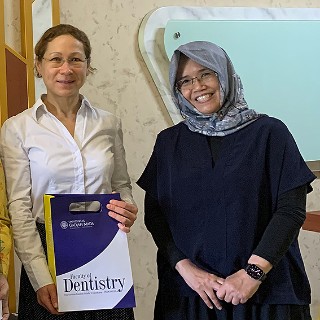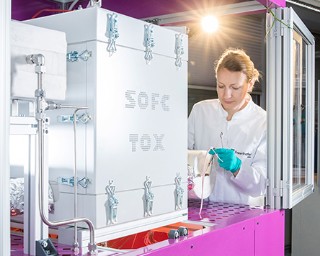
The Fraunhofer flagship project “Waste4Future” sets new standards in waste management and the circular economy for plastics.
more info
The Fraunhofer flagship project “Waste4Future” sets new standards in waste management and the circular economy for plastics.
more info
Fraunhofer IKTS is expanding its research equipment in the additive and hybrid manufacturing of ceramic components with a new type of multi-material 3D printer from AMAREA Technology GmbH
more info
Highly efficient new heat pumps without compressors – a Fraunhofer team demonstrates the potential of electrocaloric materials for heating and cooling technology.
more info
In a groundbreaking development for Western Australia, Edith Cowan University (ECU) and Fraunhofer IKTS are set to establish a cutting-edge research and innovation lab. The focus will be on sustainable ceramic technologies for industrial water treatment and hydrogen generation as well as on non-destructive testing. This initiative aims to open doors for students, drive industry growth, and deliver practical business solutions across the region.
more info
On February 5, 2025, Natalia Beshchasna was appointed adjunct professor at Universitas Gadjah Mada. At one of Indonesia's largest and most prestigious universities, she will conduct research, hold seminars and lectures, supervise doctoral students and expand the collaboration between the university and Fraunhofer IKTS. Her work will focus on polymer-based structures and nanomaterials in the dental field, as well as microfluidic-based organ-on-chip systems.
more info
One of the greatest challenges for Germany as an industrialized nation in the coming years is achieving both climate neutrality and the substitution of fossil fuels. A fundamental energy transition can only be achieved through efficiency and innovation in all industrial sectors. However, progress is slow. The project “Accelerating Decarbonization for a Resilient Economy” (DekaRB) is therefore conducting research together with the Department of Industrial, Economic and Occupational Sociology at the Friedrich Schiller University in Jena and the Thüringer Erneuerbare Energien Netzwerk (ThEEN) e. V. on the non-technical barriers to decarbonization in Thuringia. The project will run for three years and is funded by the German Federal Ministry for Economic Affairs and Climate Protection.
more info
Using hydrogen to generate electricity does not cause any climate-damaging emissions. But storing and transporting the gas pose technical challenges. With this in mind, Fraunhofer researchers use ammonia, a hydrogen derivative that is easier to handle, as a starting material. Ammonia is cracked in a high-temperature fuel cell stack, and the hydrogen produced in this process is converted to electricity. The waste heat can be used as heat energy, for example.
more info
On September 1, 2024, Dr.-Ing. Constanze Tschöpe was appointed a professorship at the Brandenburg University of Technology Cottbus-Senftenberg (BTU). She is the new chair of “Cognitive Materials Analytics” in the Faculty of Mathematics, Computer Science, Physics, Electrical Engineering und Information Technology.
more info
Reliable microelectronic systems, such as electronic components in the automotive sector, must undergo lengthy and expensive testing before they can be mass-produced. With new simulation approaches, such tests can be implemented much faster, more flexibly and at a lower cost. Fraunhofer IKTS is working on this together with partners from industry and research in the “mikroVAL” project.
more info